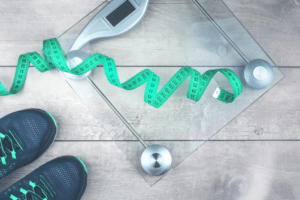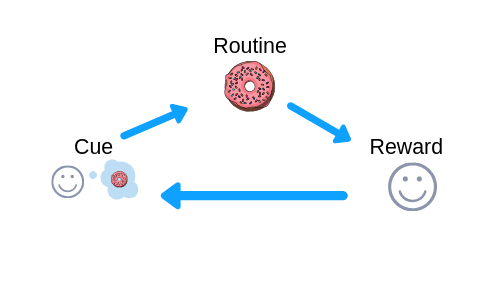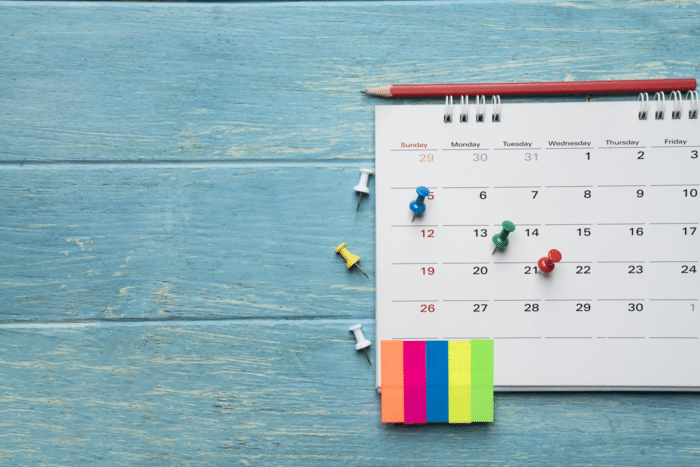
Nutritionist & Exercise Scientist Declan Doyle from Health@Work shares his views on weight management.
Like it or not you are the sum of your habits. There’s some habits you probably notice, like the way you tie your shoe laces or which way you sleep at night. However, most are automatic behaviours that you do subconsciously without noticing at all.
No matter what the ratio is for how many good or not so good habits you’ve got, they’re controlled by the most powerful muscle in your body – your brain.
In simple terms, your brain tells you what to eat and it really couldn’t care less about your good intentions when it comes to weight loss. From an evolutionary perspective, our brains have been wired to drive us to eat as much sugar and fat when the opportunity presents itself.
This wasn’t so much of a problem for our ancestors as these types of foods were rare and overindulging was therefore encouraged. In tribes you will still see this type of behaviour today as food availability remains scarce in some cultures. However, things get trickier when foods like these are no longer in short supply, which is the case for most of us today. The Brain hasn’t caught up with the fact that food availability is now in abundance, so it still fires off the same signals as if back in our ancestors’ days.
The more the brain is rewarded with quick, easy and satisfying food that release happy hormones the more wired it becomes to the point that it now automates most of your behaviours and, in turn, your habits.
So, in order to change these habits you need to understand how habits work, so let’s geek out for a minute.

All habits work the same way.
Firstly, everything starts with a CUE, this can be a certain time, place, a person/group you’re with, a behaviour or emotion. The issue for most is we are too often too “busy” to notice any of these signals so can easily fall into routines that lead us to move less or overeat.
For example, if you’ve ever been to an “All you can eat buffet” you’ve likely seen people or found yourself eating so much you can barely walk to the car when you’re finished!
Here, many cues have contributed; the people around are doing the same thing, the smells, the time of day and the endless food choices make it hard to resist overindulging.
Now, of course, we don’t do all you can eat buffets every day but make no mistake that there are cues in your life right now that trigger certain behaviours from you.
The cue, therefore, is the first part of the habit loop system that leads to a ROUTINE or behaviour. Left unnoticed, the same cues lead to the same behaviours and soon the whole process becomes one big automated system.
Now habits only exist if the brain feels there is a REWARD at the end of it is. There needs to be something that feeds back to the brain that this “feels worth it”.
Now guess what foods feedback the biggest Reward? You guessed it! Those pesky sugary and fatty foods.
Modern diets include foods that have added ingredients that together with the mixing of fats, sugar, and salt power up the reward system in the brain way more than the food our ancestors would have been used to (once you pop you can’t stop).
Hopefully, you can now see, why it can be a challenge to form healthier habits if you are unaware of how the cues in your life are playing a role. The more you’ve succumbed to them the harder it becomes to change them.
Unless you reverse engineer the whole process and start shaping your environment to make it easier for you to form new habits. In order to do that we must practice self-awareness.
Find your cues
First, let’s look at your eating behaviour. I want you to think of a habit right now that you feel is not contributing to a healthier weight. It could be anything like sitting down for most of the day, buying unhealthy snacks, or what you do at the weekend.
Ready? Insert the habit here ________________________________
Now answer the following questions:
- What time does this usually happen? _________________
- Where are you when this happens? _____________________
- Who is there with you? ____________________________
- What did you just do? _____________________________
- What are you usually feeling? __________________________
One of the five answers above is the cue to your habits according to leading professor Charles Duhigg. The two most common cues are TIME and ENVIRONMENT when it comes to eating and drinking habits so pay attention to these.
For example, hypothetically speaking, if you wrote that eating too many cookies was the habit you want to change, and you are usually in the kitchen when you eat them, then the way the kitchen environment is designed is likely the cue. The cookies may even be positioned at a place where you notice them instantly when you step inside the kitchen, like on the countertops or next to the kettle.
This visual trigger leads to a physical trigger and a routine evolves. Every time you enter the kitchen, make a cup of tea (or both), you grab a cookie at the same time. The combined taste of sweetness, sugar and fat lights up the reward sensors in the brain the neurological loop get reinforced (“this is worth it”) once again.
The cookies light up the reward sensors in the brain and the more you repeat this rewarding routine, the stronger the feedback loop becomes and the stronger the habit becomes and research has supported this theory time and time again.
People who go to the gym each day, cook every night, have a healthy lunch every day haven’t got magical superpowers. They’ve rewired their brains by setting up their cues in a way that triggers their behaviour leading to healthier habits being formed. They’ve made all these behaviours into an automatic system and they rely very little on motivation to do it.
CUES + BEHAVIOUR + TIME = HABITS
We will be building on these nutritional habits by setting up better cues throughout the course, but for now, let’s start making some marginal gains by designing your very own habit system.

Designing your habit system
The system for building a new habit looks like this:
-
Make it so easy you can’t fail.
Choose something that takes such little effort that you don’t require a lot of motivation to do it. As a general rule of thumb, it should feel like a 9 out of 10 on how confident you are you can do it on a daily basis. If it’s anything less than a 9 out of 10 then you need to look for something easier.
-
Pick a cue/trigger for the action.
It’s much easier to get momentum with habits when the behaviour occurs after something that you already do – this is known as an anchor habit. Like washing your hands after you use the toilet (I hope you do!) or putting on your shoes after your socks. I call it the domino effect.
All you’re doing here is reminding your brain to play along. Triggers will subconsciously lead your brain to initiate the behaviour that maps to the habit you want to do more often. If you try to consciously remember it won’t work. Remember the brain has thousands of decisions to make every day. However, it will follow along automatically if simple cues are set up to lead the way.
-
Reward yourself each time.
It’s important that your brain associates the new behaviour with pleasure, habits literally exist because rewards await them. It needs to feel worth it! The great thing is that the magnitude of the reward doesn’t matter for small actions.
Little rewards like giving yourself a pat on the back, putting a penny in a jar and so on reinforce the habit loop. Make sure to finish with a reward that resonates with you either way.
-
Do it daily.
Building on something you’re already doing makes it more convenient for your brain to recognise “this is okay”. Therefore, aiming to do this on a daily basis is an achievable goal because the cue is already set up for you.
Eat. Sleep. Habit. Repeat. When the magic happens, that is when you don’t even notice you’re doing it anymore. Let’s put it all together.
Now, here’s how to do it
Forming a new habit is far harder than building on an existing habit. That is, starting to go to the gym every day is harder than adding a new exercise once you’re there or adding more weight to your deadlift. That’s why forming the tiny habit in the first place is the most important thing.
First, let’s look at an example so you can see how simple it is.
You already have habit systems in place without noticing them. Every time you wake up, shower, brush your teeth or drink tea, these are habit systems. You’ve done these so often they’re no longer a chore but a natural part of your day.
Now we want to repeat this process with new habits systems. The key with this process is to plan by:
- Pick what you want to do
- Plan a time to do each one
- Track your progress
The system is simple, just complete the sentence below using the following format
When/After I [CURRENT HABIT/ACTIVITY], I will [NEW HABIT/ACTIVITY]
Below I’ve left examples of some nutritional and movement habit systems to give you some ideas if you’re unsure where to start.
Nutrition:
- After I make my breakfast, I will eat a piece of fruit
- When I get my morning break, I will drink a protein smoothie
- When I get into work, I will drink a full glass of water each day
- When I sit down at night, I will make a healthy lunch for the next day
- When I make dinner, I will prep a salad first
Movement:
- After I make breakfast, I will go for a ten-minute walk
- When I get my lunch break, I will walk outside for 15 minutes
- When I arrive home, I will put on my trainers and walk around the block
- After I come downstairs I will do 5 press up and 30 squats
- After I get into work, I will take the stairs every morning
Nutritional habit system
When/After I ____________________________ (Current habit/activity)
I will ____________________________________(New habit/activity)
My reward will be ___________________________________________
Movement habit system
When/After I ____________________________(Current habit/activity)
I will ___________________________________ (New habit/activity)
My reward will be ___________________________________________
Checklist
- Is the habit Easy to begin with? Yes/No (1-10 scale)
- Can you set up a prompt to trigger you do it? Yes/No (reminders, accountability)
- Are you confident in your ability to do it? Yes/No
If you answered Yes to all of the above questions, you are primed for success. If you answered No, consider what needs to change to make it a yes!

Track your progress
One of the best ways to keep yourself accountable is to track your progress, that’s why I’ve included habit tracker to track your progress. Simply tick each day [] when you complete a habit or mark [] when you don’t. If you like your tech then I recommend using the app habitbull.
At the end of the week, you can give yourself a percentage by dividing your completions by seven and multiplying the answer by 100.
Aim for progress, not perfection.
Summary
- Habits, good or bad, drive behaviour
- Practice self-awareness to notice what’s triggering your own behaviour
- Design your environment to make it easy for you to make better decisions
- Start building a new habit on top of one you’re already doing
- Track your progress and adjust accordingly
Habit Tracker
| Week 1 | Mon | Tues | Wed | Thurs | Fri | Sat | Sun | % |
| Movement | ||||||||
| Nutrition |
| Week 2 | Mon | Tues | Wed | Thurs | Fri | Sat | Sun | % |
| Movement | ||||||||
| Nutrition |
| Week 3 | Mon | Tues | Wed | Thurs | Fri | Sat | Sun | % |
| Movement | ||||||||
| Nutrition |
| Week 4 | Mon | Tues | Wed | Thurs | Fri | Sat | Sun | % |
| Movement | ||||||||
| Nutrition |
